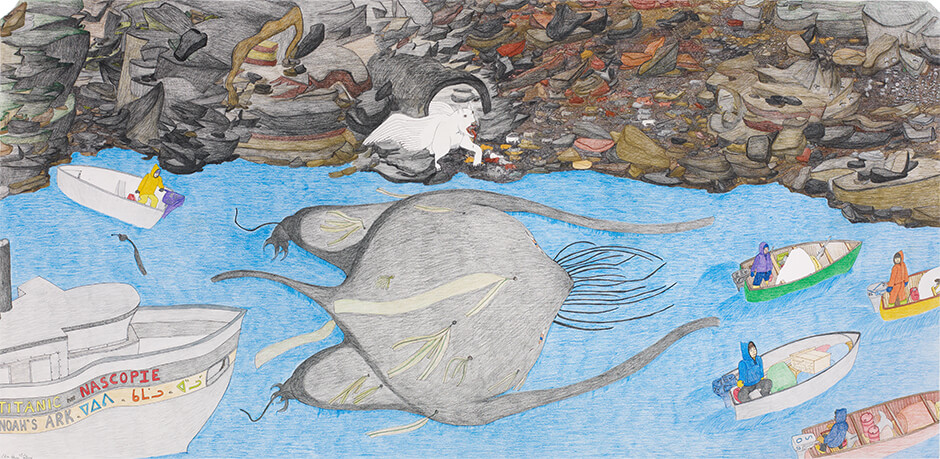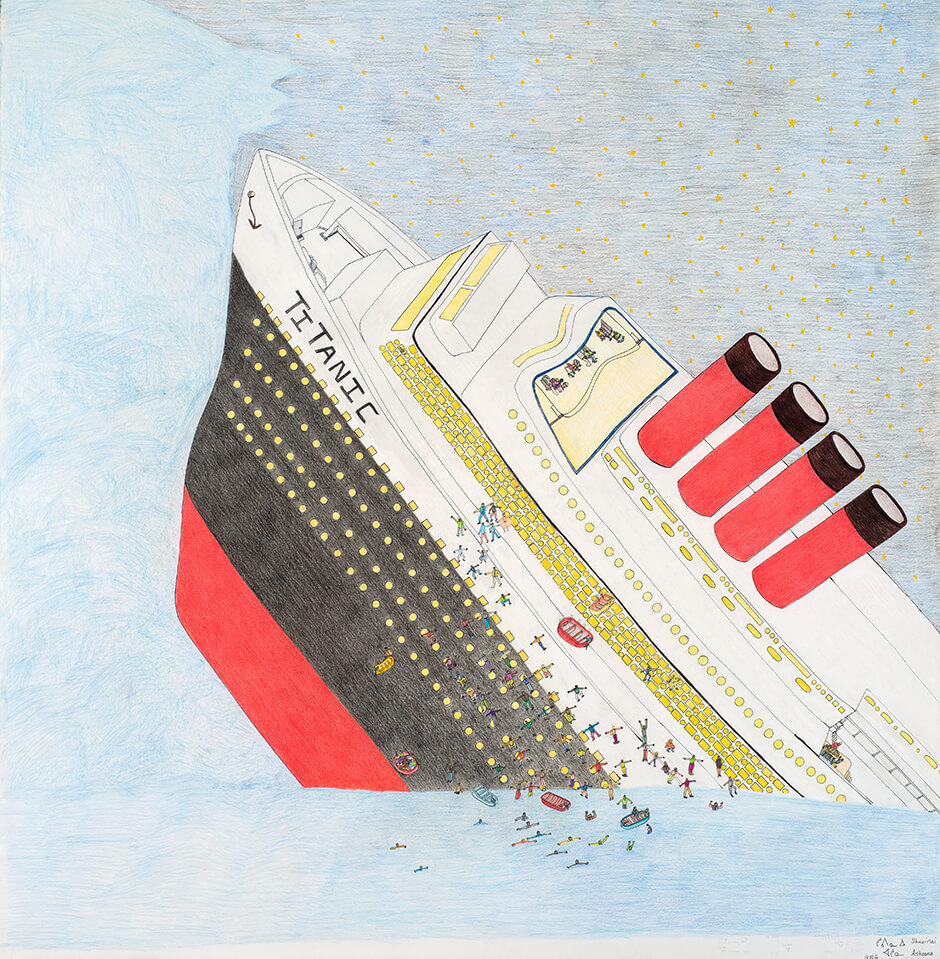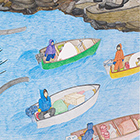Titanic, Nascopie, and Noah’s Ark 2008

Shuvinai Ashoona, Titanic, Nascopie, and Noah’s Ark, 2008
Ink and coloured pencil on paper, 122 x 241 cm
Art Gallery of Ontario, Toronto
Shuvinai Ashoona had not yet been born when the Nascopie sank in 1947, but she would have heard the story from the elders. The RMS Nascopie served for many years as a supply ship to the Hudson’s Bay Company’s northern outposts, delivering food, clothing, and other supplies to remote communities. On July 21, 1947, the ship struck an uncharted reef off Beacon Island at the entrance to Cape Dorset harbour. The local Inuit attempted to salvage any goods they could from the frigid waters. In the end, on September 25, the ship was ripped from the reef by a storm, broke in half, and the bow slid beneath the water. The stern, still clinging to the reef, was swept off by another storm less than a month later. The sinking of the Nascopie figures in the work of many artists from the region.

A sizable work with a remarkably specific title in the artist’s oeuvre, featured in the exhibition Noise Ghost: Shuvinai Ashoona and Shary Boyle, 2009, at the Justina M. Barnicke Gallery in Toronto, Titanic, Nascopie and Noah’s Ark is a phenomenal example of one of the artist’s many renderings of the ship. In this large drawing, the bow of the Nascopie appears on the left. On the ship’s side the artist has written the names Titanic, Nascopie, and Noah’s Ark. The ship is pursuing a large squid, which in turn is pursuing four small fishing boats that exit on the right. In the background a highly detailed rocky landscape is rich with the colours of summer. In the centre of the landscape is a cave with a winged polar bear emerging from it, growling at the passing squid, protecting her three young scampering from the cave behind her.
The scene combines the everyday and the fantastical, leaving the viewer pondering what exactly the message of the picture is. Herein lies the brilliance of Shuvinai’s approach. What is the significance of the giant squid? Why is the ship in pursuit of the squid? Of particular interest is the ship itself: each of the three titular ships denotes an epic journey and a fateful end. Shuvinai’s reference to these three ships, adapted from movies she has seen and stories she has heard, imply a catastrophic event. The work highlights Shuvinai’s tendency to take references from different eras and place them together, fusing the past, present, and the uncertain future in an imaginative context that also draws on memory and real life.
Similarly, Sinking Titanic, 2012, is the artist’s interpretation of the most famous shipwreck, which occurred a hundred years earlier. People fall from the sinking ship, screaming, with arms outstretched. This, no doubt, is Shuvinai’s rendition based on James Cameron’s 1997 movie, one of her favourites. Perhaps because the Nascopie has a very real history in Cape Dorset, ship disasters have more relevance for the artist, instilling a sense of loss.

 About the Author
About the Author
 More Online Art Books
More Online Art Books
 Acknowledgements
Acknowledgements